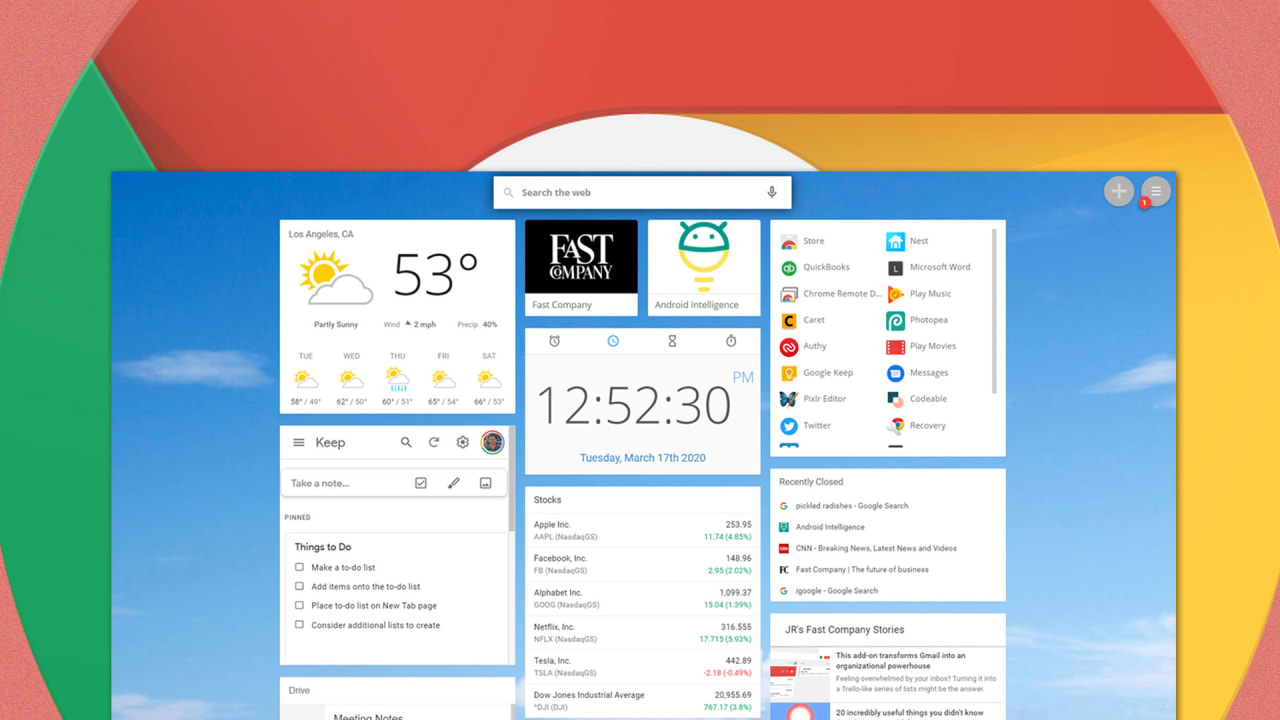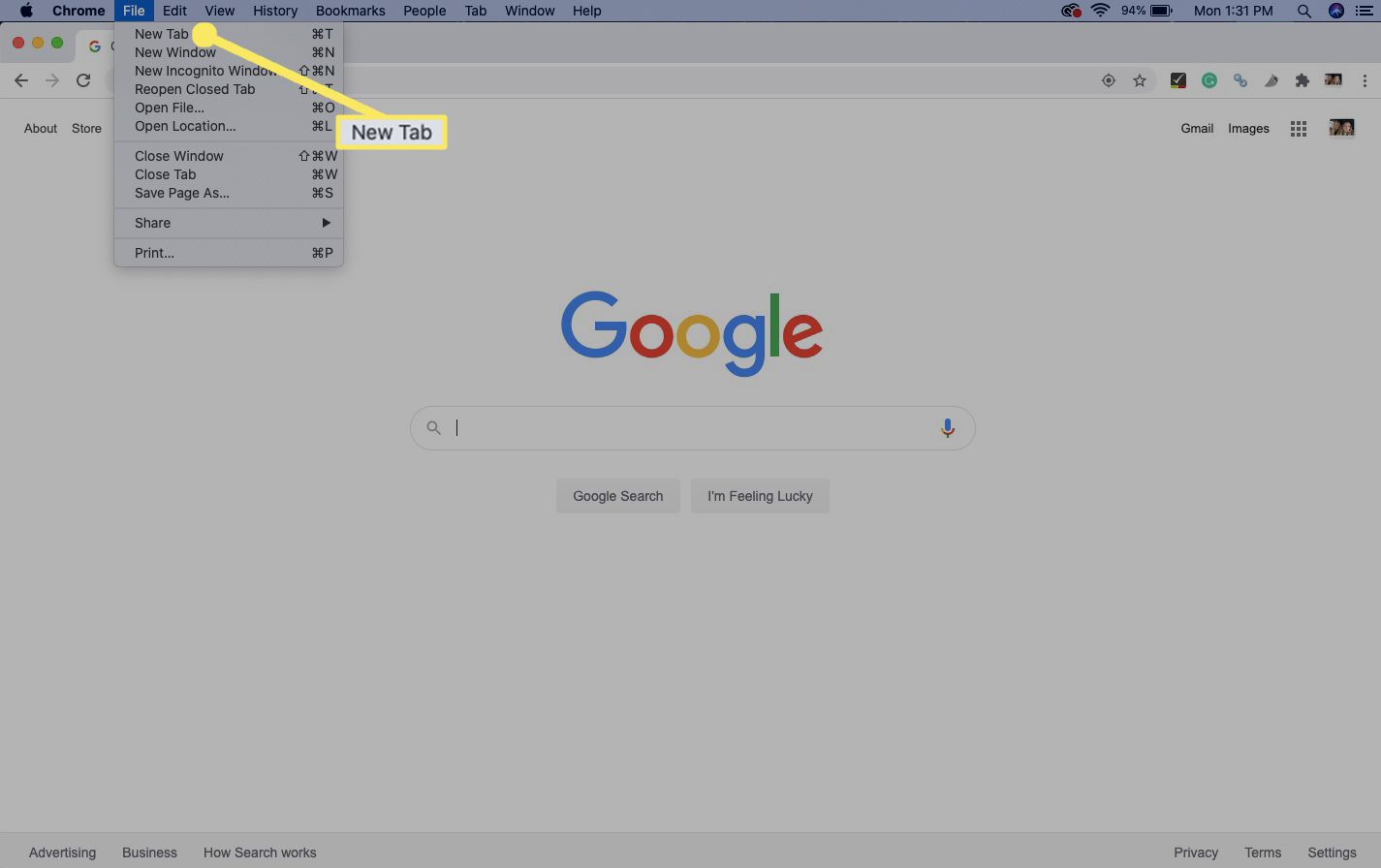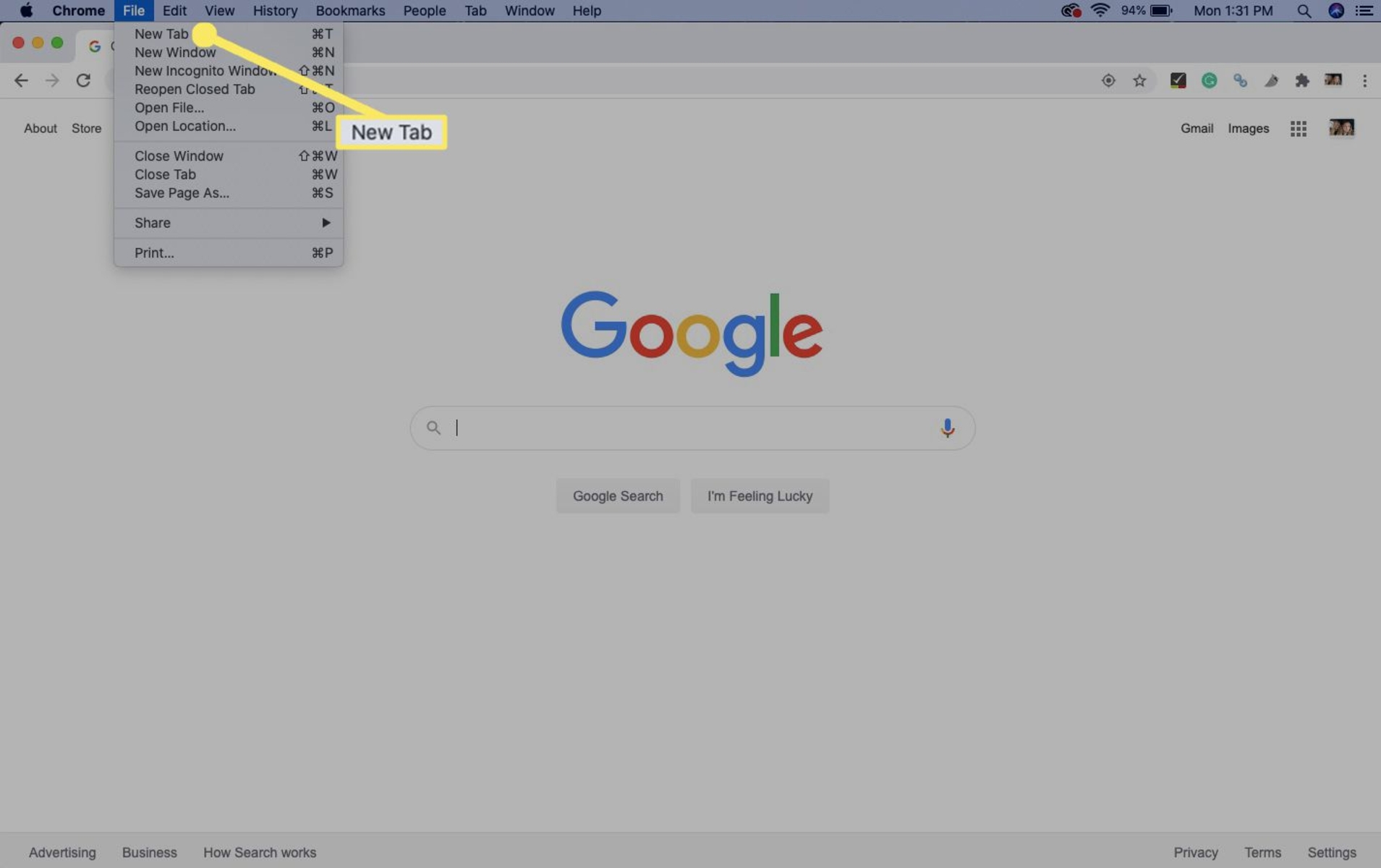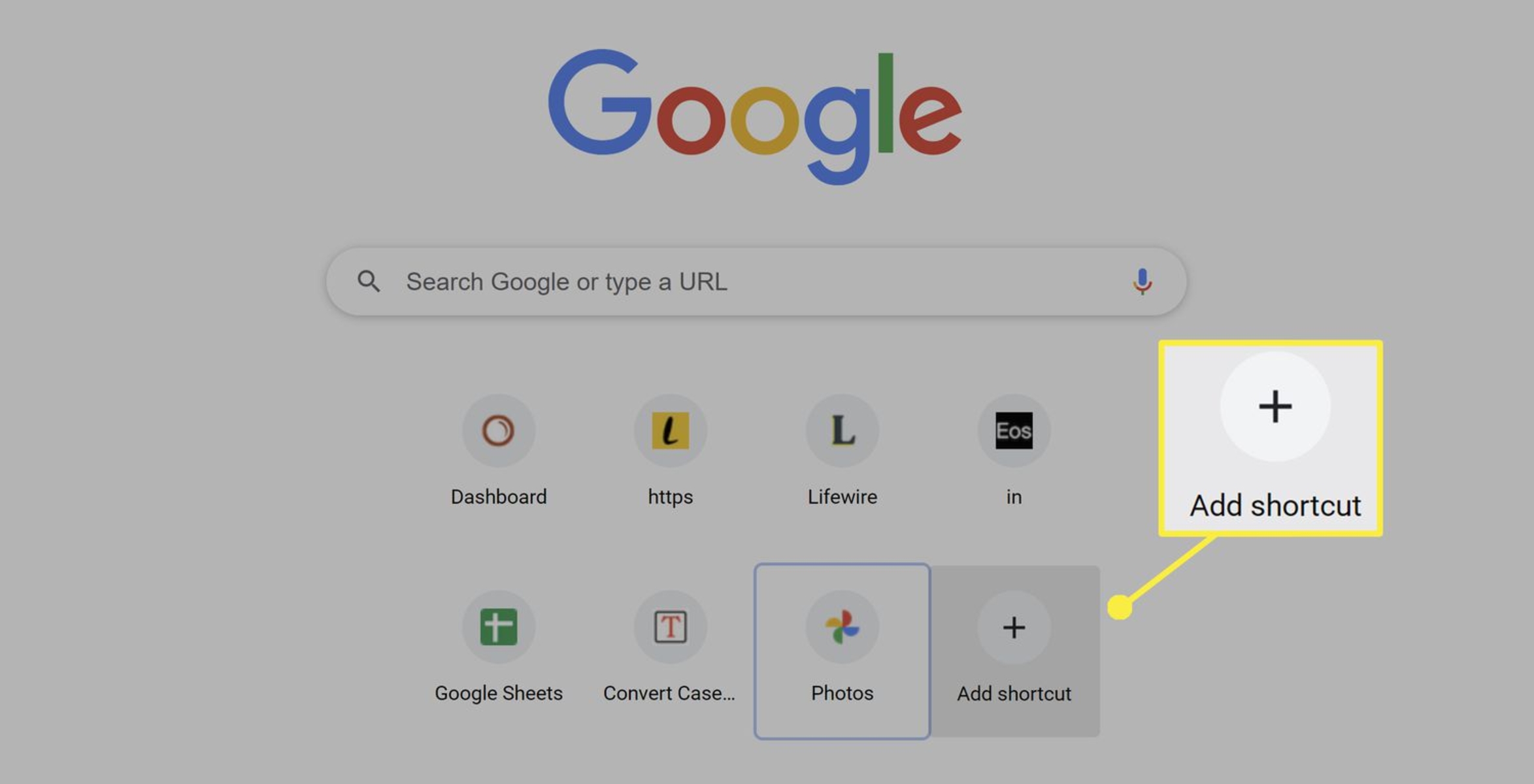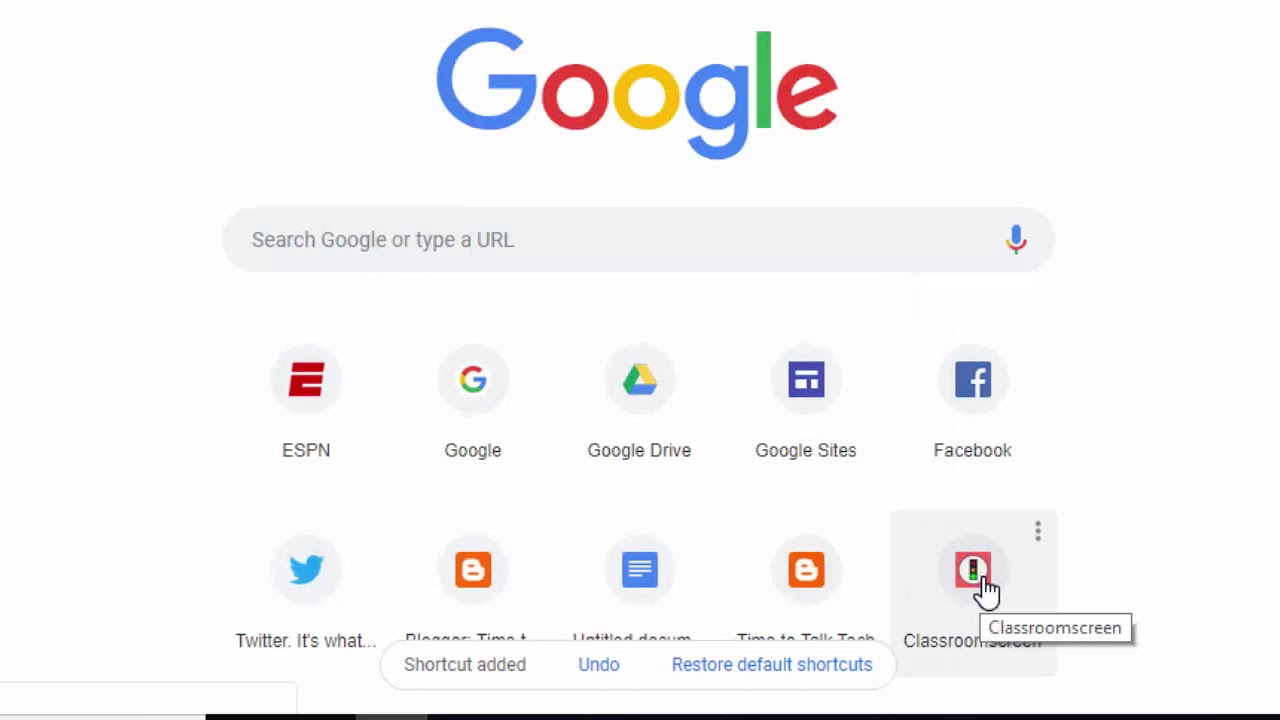Introduction
Setting a new tab page on Chrome can significantly enhance your browsing experience. By customizing the new tab page, you can streamline access to your favorite websites, productivity tools, or personalized content, making every new tab a gateway to efficiency and enjoyment. Whether you're a casual user seeking convenience or a professional aiming to optimize workflow, configuring the new tab page to your preferences can be a game-changer.
Chrome's default new tab page displays a grid of frequently visited sites and a Google search bar. While this layout serves a general purpose, personalizing the new tab page can elevate your browsing routine. Imagine having quick access to your most visited websites, a to-do list, weather updates, or inspiring quotes every time you open a new tab. This level of customization not only saves time but also adds a touch of personality to your browsing environment.
Moreover, setting a new tab page can be a strategic move for businesses and organizations. By configuring the new tab page to display company resources, internal tools, or industry news, employees can stay informed and productive with minimal effort. This approach fosters a cohesive digital workspace and promotes seamless access to essential information, ultimately boosting productivity and efficiency within the organization.
In this guide, we will walk you through the simple yet impactful process of setting a new tab page on Chrome. By following the steps outlined in this article, you will gain the ability to transform your new tab page into a tailored dashboard that aligns with your unique browsing habits and preferences. Whether you're aiming for a more organized browsing experience, a personalized productivity hub, or a branded new tab page for your organization, this guide will equip you with the knowledge to achieve your desired new tab page setup. Let's dive into the step-by-step process and unlock the potential of a customized new tab page on Chrome.
Step 1: Open Chrome Browser
To embark on the journey of customizing your new tab page, the first step is to open the Chrome browser on your desktop or laptop. Chrome, developed by Google, is one of the most popular web browsers globally, known for its speed, simplicity, and user-friendly interface. Whether you're a seasoned Chrome user or just getting started, accessing the browser is the initial gateway to unlocking its myriad of features and customization options.
Opening Chrome is a straightforward process. If you have a shortcut icon for Chrome on your desktop, simply double-click on it to launch the browser. Alternatively, you can access Chrome from the taskbar if it's pinned there, or from the Start menu on Windows or the Applications folder on macOS.
For Windows users, you can also open Chrome by pressing the Windows key on your keyboard, typing "Chrome" to search for the application, and hitting Enter to launch it. On macOS, you can utilize Spotlight Search by pressing Command + Space, typing "Chrome," and pressing Enter to open the browser.
Once Chrome is launched, you'll be greeted by the familiar interface, featuring the address bar, tabs, and the customizable menu represented by three vertical dots in the top-right corner. This menu is your gateway to a plethora of settings and customization options, including the ability to set a specific page as your new tab page.
With Chrome open and ready, you're now poised to delve into the next steps of configuring your new tab page, where you can infuse your browsing experience with personalized content and efficiency-enhancing tools. The journey to a tailored new tab page begins with this simple yet pivotal first step of opening the Chrome browser.
Now that Chrome is at your fingertips, let's proceed to the next step and continue our quest to transform the new tab page into a personalized and purposeful dashboard tailored to your preferences and browsing habits.
Step 2: Click on the Three Dots
Upon opening the Chrome browser, you will notice three vertical dots located at the top-right corner of the window. These dots, often referred to as the "More" or "Customize and control Google Chrome" icon, serve as the gateway to a multitude of browser settings and customization options. Clicking on these dots unveils a dropdown menu that empowers users to tailor their browsing experience according to their preferences and requirements.
When you click on the three dots, a menu cascades down, presenting a range of options that span from basic functionalities to advanced settings. This menu is designed to provide users with easy access to essential features, including the ability to manage bookmarks, access browsing history, install extensions, and customize various aspects of the browser.
The dropdown menu is intuitively organized, allowing users to navigate through the available options effortlessly. Whether you're seeking to adjust browser settings, access developer tools, or explore additional features, the menu accommodates these needs within a few clicks.
Moreover, the three dots menu is not only a gateway to browser settings but also a portal to the Chrome Web Store, where users can discover and install a diverse array of extensions, themes, and apps to augment their browsing experience. This seamless integration of the Chrome Web Store within the browser interface underscores Google's commitment to providing users with a rich ecosystem of tools and resources to personalize and enhance their online activities.
In addition to its functional significance, the three dots menu embodies Chrome's user-centric design philosophy, prioritizing accessibility and user empowerment. By consolidating an array of features and resources behind a simple, unobtrusive icon, Chrome ensures that users can effortlessly harness the full potential of the browser without being overwhelmed by complexity.
As you click on the three dots and unveil the menu, you are presented with a gateway to a world of customization and optimization possibilities. This pivotal action sets the stage for the subsequent steps in configuring your new tab page, where you will harness the power of Chrome's versatile features to craft a browsing environment that resonates with your unique preferences and browsing habits.
With the three dots menu at your disposal, you are now poised to venture into the next steps of setting a new tab page on Chrome, where you will continue to unlock the potential of personalized browsing and seamless access to your preferred online destinations and resources.
Step 3: Select Settings
After clicking on the three dots in the top-right corner of the Chrome browser, a dropdown menu appears, presenting a range of options to customize your browsing experience. Among these options, you will find "Settings," which is a pivotal entry point to configure various aspects of Chrome to align with your preferences and requirements.
Selecting "Settings" from the dropdown menu opens a new tab within the browser, dedicated to Chrome's extensive customization and management options. This tab is designed to empower users with granular control over their browsing environment, encompassing everything from basic preferences to advanced configurations.
Upon entering the Settings tab, you are greeted by a sidebar on the left, categorizing the available options into distinct sections such as "Privacy and security," "Autofill," "Appearance," "Search engine," and more. This intuitive organization streamlines the navigation process, allowing users to swiftly locate the settings they intend to modify or explore.
The "Settings" tab serves as a central hub for tailoring Chrome to your specific needs. Whether you aim to adjust privacy settings, manage site permissions, customize the browser's appearance, or delve into advanced configurations, this tab encapsulates the breadth of Chrome's customization capabilities.
Furthermore, the Settings tab embodies Chrome's commitment to user empowerment and accessibility. By consolidating an array of features and preferences within a unified interface, Chrome ensures that users can effortlessly navigate and personalize their browsing environment without encountering complexity or ambiguity.
As you delve into the Settings tab, you gain the ability to sculpt Chrome into a tailored platform that resonates with your browsing habits and preferences. Whether you seek to enhance privacy, streamline access to essential tools, or optimize the visual aesthetics of the browser, the Settings tab provides the canvas for these customizations.
With the Settings tab at your disposal, you are now poised to embark on the next steps of configuring your new tab page, where you will harness the power of Chrome's versatile features to craft a browsing environment that aligns with your unique preferences and requirements.
As you navigate through the Settings tab, you are presented with a wealth of options to fine-tune Chrome according to your preferences, setting the stage for the subsequent steps in configuring your new tab page. This pivotal action sets the foundation for the seamless integration of personalized content and efficiency-enhancing tools into your browsing environment.
Now that you have selected "Settings" and gained access to Chrome's customization hub, you are ready to proceed to the next steps in setting a new tab page on Chrome, where you will continue to unlock the potential of a personalized and purposeful dashboard tailored to your unique browsing habits and preferences.
Step 4: Choose Open a Specific Page or Set of Pages
Upon entering the Settings tab in Chrome, you will encounter a range of customization options designed to empower users with granular control over their browsing environment. Among these options, the pivotal setting for configuring the new tab page is "Open a specific page or set of pages." This setting serves as the gateway to transforming the default new tab page into a personalized dashboard that aligns with your unique browsing habits and preferences.
When you select "Open a specific page or set of pages," Chrome presents you with the ability to define which web pages should be launched upon opening the browser or a new tab. This level of customization is instrumental in tailoring your browsing experience, as it allows you to curate a collection of preferred websites, productivity tools, or personalized content to greet you every time you initiate a new browsing session.
Upon choosing this setting, you have the flexibility to add one or multiple web pages to be opened automatically. This versatility enables you to craft a comprehensive new tab page that caters to various aspects of your online activities. Whether you wish to streamline access to frequently visited websites, integrate a to-do list or productivity tool, or showcase inspiring content, the "Open a specific page or set of pages" setting empowers you to curate a browsing environment that resonates with your unique preferences.
Furthermore, the ability to set a specific page or set of pages as the default new tab environment underscores Chrome's commitment to user-centric customization. By offering this level of flexibility, Chrome ensures that users can seamlessly integrate their preferred online destinations and resources into their browsing routine, fostering efficiency and personalization.
As you navigate through the process of choosing "Open a specific page or set of pages," you are presented with a canvas to craft a browsing environment that aligns with your unique preferences and requirements. This pivotal action sets the stage for the seamless integration of personalized content and efficiency-enhancing tools into your browsing environment, elevating the new tab page into a purposeful dashboard tailored to your browsing habits.
With the ability to choose "Open a specific page or set of pages," you are now poised to proceed to the subsequent steps in configuring your new tab page, where you will continue to unlock the potential of a personalized and purposeful dashboard tailored to your unique browsing habits and preferences.
Step 5: Add New Tab Page URL
After selecting "Open a specific page or set of pages" in the Chrome settings, you will encounter the option to "Add a new page." This pivotal step empowers you to define the URL of the web page that will serve as your customized new tab page. The URL you specify here will determine the content and functionality that greet you every time you open a new tab, offering a gateway to a tailored browsing experience that aligns with your unique preferences and requirements.
When adding the new tab page URL, you have the freedom to choose from a diverse array of web pages, each catering to different aspects of your online activities. Whether you opt for a productivity tool, a personalized dashboard, a news aggregator, or an inspirational website, the URL you specify will shape the essence of your new tab page, infusing it with content and functionality that resonate with your browsing habits.
This level of customization extends beyond mere aesthetics, as the new tab page URL can integrate seamlessly with your workflow, providing quick access to essential resources, tools, and information. For instance, you may choose to set a project management tool as your new tab page, enabling you to instantly engage with your tasks and deadlines upon opening a new tab. Alternatively, you might opt for a news aggregator to stay informed about industry developments, or a personalized dashboard that consolidates your favorite websites and productivity tools into a single, accessible interface.
Moreover, the process of adding the new tab page URL underscores Chrome's commitment to user empowerment and personalization. By offering the flexibility to define the content and functionality of the new tab page, Chrome ensures that users can craft a browsing environment that resonates with their unique preferences, fostering efficiency and seamless access to preferred online destinations and resources.
As you navigate through the process of adding the new tab page URL, you are presented with the opportunity to infuse your browsing experience with personalized content and efficiency-enhancing tools, elevating the new tab page into a purposeful dashboard tailored to your browsing habits. This pivotal action sets the stage for the seamless integration of curated content and functionality into your browsing environment, enriching every new tab with relevance and utility.
With the ability to add the new tab page URL, you are now poised to proceed to the final steps in configuring your new tab page, where you will continue to unlock the potential of a personalized and purposeful dashboard tailored to your unique browsing habits and preferences.
Step 6: Save Changes
After meticulously customizing your new tab page by adding the desired URL and configuring the specific page or set of pages, the final step in this transformative process is to save your changes. This pivotal action ensures that your personalized new tab page settings are preserved and seamlessly integrated into your browsing environment, ready to greet you with tailored content and functionality every time you open a new tab in Chrome.
Saving your changes in Chrome is a straightforward yet crucial step in solidifying the customizations you've meticulously crafted. Upon adding the new tab page URL and configuring the specific page or set of pages, Chrome provides a dedicated option to save your settings, ensuring that your preferences are retained and manifested each time you initiate a new browsing session.
By saving your changes, you effectively cement the personalized essence of your new tab page, transforming it into a purposeful dashboard that aligns with your unique browsing habits and requirements. This action signifies the culmination of your efforts to infuse your browsing environment with curated content and efficiency-enhancing tools, elevating the new tab page into a gateway to productivity, inspiration, or seamless access to preferred online destinations.
Furthermore, the act of saving your changes in Chrome underscores the browser's commitment to user-centric customization and empowerment. By offering a seamless and intuitive process to preserve personalized settings, Chrome ensures that users can effortlessly integrate their preferred online resources and tools into their browsing routine, fostering efficiency and personalization.
As you save your changes, you solidify the foundation of a browsing environment that resonates with your unique preferences, setting the stage for a seamless and purposeful new tab page experience. This pivotal action marks the culmination of your journey to transform the default new tab page into a tailored dashboard that caters to your browsing habits and requirements, enriching every new tab with relevance and utility.
With your changes saved, you have successfully unlocked the potential of a personalized and purposeful new tab page on Chrome, tailored to your unique browsing habits and preferences. As you embark on your browsing endeavors, your new tab page will stand as a reflection of your curated content and efficiency-enhancing tools, ready to elevate your browsing experience with every new tab you open.







